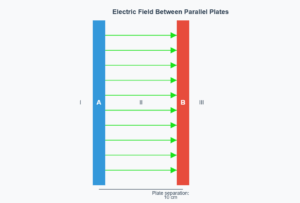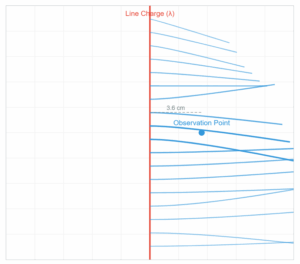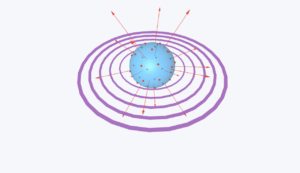Electric Charge in Water
Interactive Simulation
This simulation calculates the amount of positive and negative charge in a cup of water.
Example
Question:
How much positive and negative charge is there in a cup of water?
Solution:
Let us assume that the mass of one cup of water is \(250\,\text{g}\). The molecular mass of water is \(18\,\text{g}\). Thus, one mole (\(= 6.02 \times 10^{23}\) molecules) of water is \(18\,\text{g}\). Therefore, the number of molecules in one cup of water is \(\frac{250}{18} \times 6.02 \times 10^{23}\).
Each molecule of water contains two hydrogen atoms and one oxygen atom, i.e., 10 electrons and 10 protons. Hence the total positive and total negative charge has the same magnitude. It is equal to \(\frac{250}{18} \times 6.02 \times 10^{23} \times 10 \times 1.6 \times 10^{-19}\,\text{C} = 1.34 \times 10^{7}\,\text{C}\).
Calculation Steps
Explanation
The example calculates the total positive and negative charge in a cup of water (250g).
Key Concepts:
Molecular Composition: Each water molecule (H₂O) contains:
- 2 hydrogen atoms (1 proton + 1 electron each)
- 1 oxygen atom (8 protons + 8 electrons)
- Total: 10 protons and 10 electrons per molecule
Avogadro's Number: 1 mole = 6.02 × 10²³ molecules
Elementary Charge: e = 1.6 × 10⁻¹⁹ C (charge of one proton or electron)
Calculation Steps:
- Calculate number of moles of water
- Multiply by Avogadro's number to get total molecules
- Multiply by 10 (charges per molecule) and elementary charge
- Result shows equal but opposite charges (±1.34 × 10⁷ C for 250g)
Note: While the total charge is enormous, water is electrically neutral because the positive and negative charges balance exactly.



